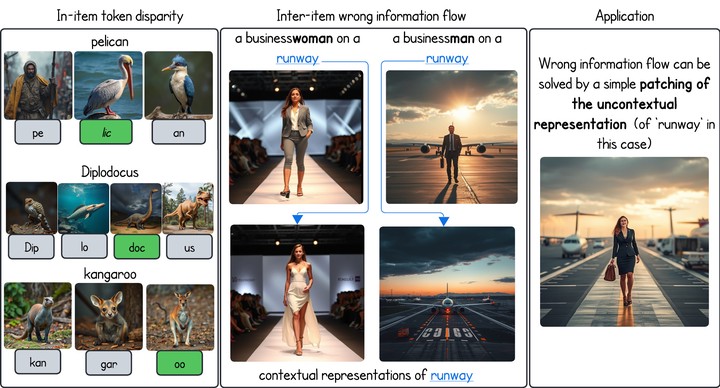
Abstract
Text-to-Image (T2I) models often suffer from issues such as semantic leakage, incorrect feature binding, and omissions of key concepts in the generated image. This work studies these phenomena by looking into the role of information flow between textual token representations. To this end, we generate images by applying the diffusion component on a subset of contextual token representations in a given prompt and observe several interesting phenomena. First, in many cases, a word or multiword expression is fully represented by one or two tokens, while other tokens are redundant. For example, in "San Francisco's Golden Gate Bridge", the token "gate" alone captures the full expression. We demonstrate the redundancy of these tokens by removing them after textual encoding and generating an image from the resulting representation. Surprisingly, we find that this process not only maintains image generation performance but also reduces errors by 21% compared to standard generation. We then show that information can also flow between different expressions in a sentence, which often leads to semantic leakage. Based on this observation, we propose a simple, training-free method to mitigate semantic leakage: replacing the leaked item's representation after the textual encoding with its uncontextualized representation. Remarkably, this simple approach reduces semantic leakage by 85%. Overall, our work provides a comprehensive analysis of information flow across textual tokens in T2I models, offering both novel insights and practical benefits.